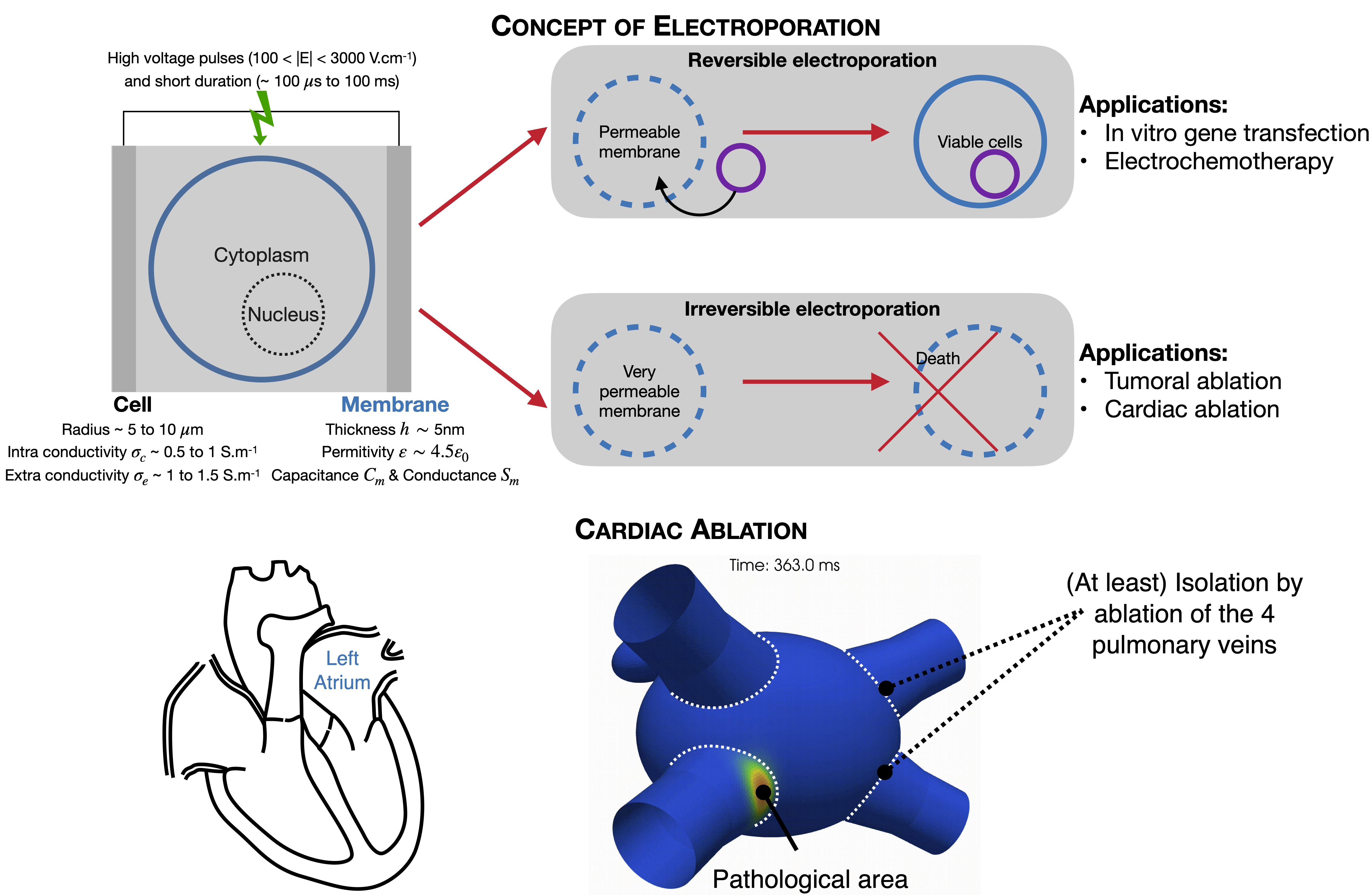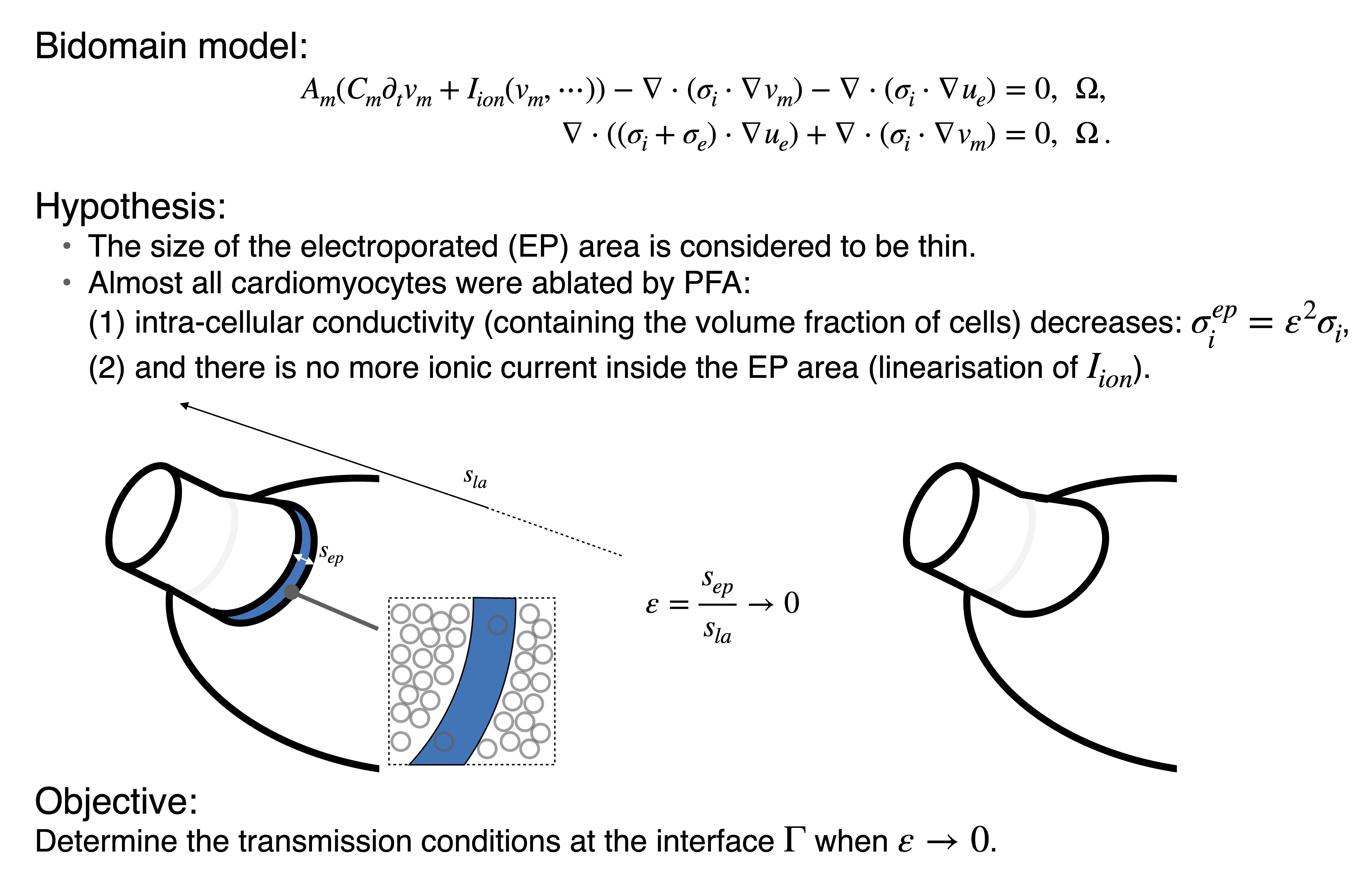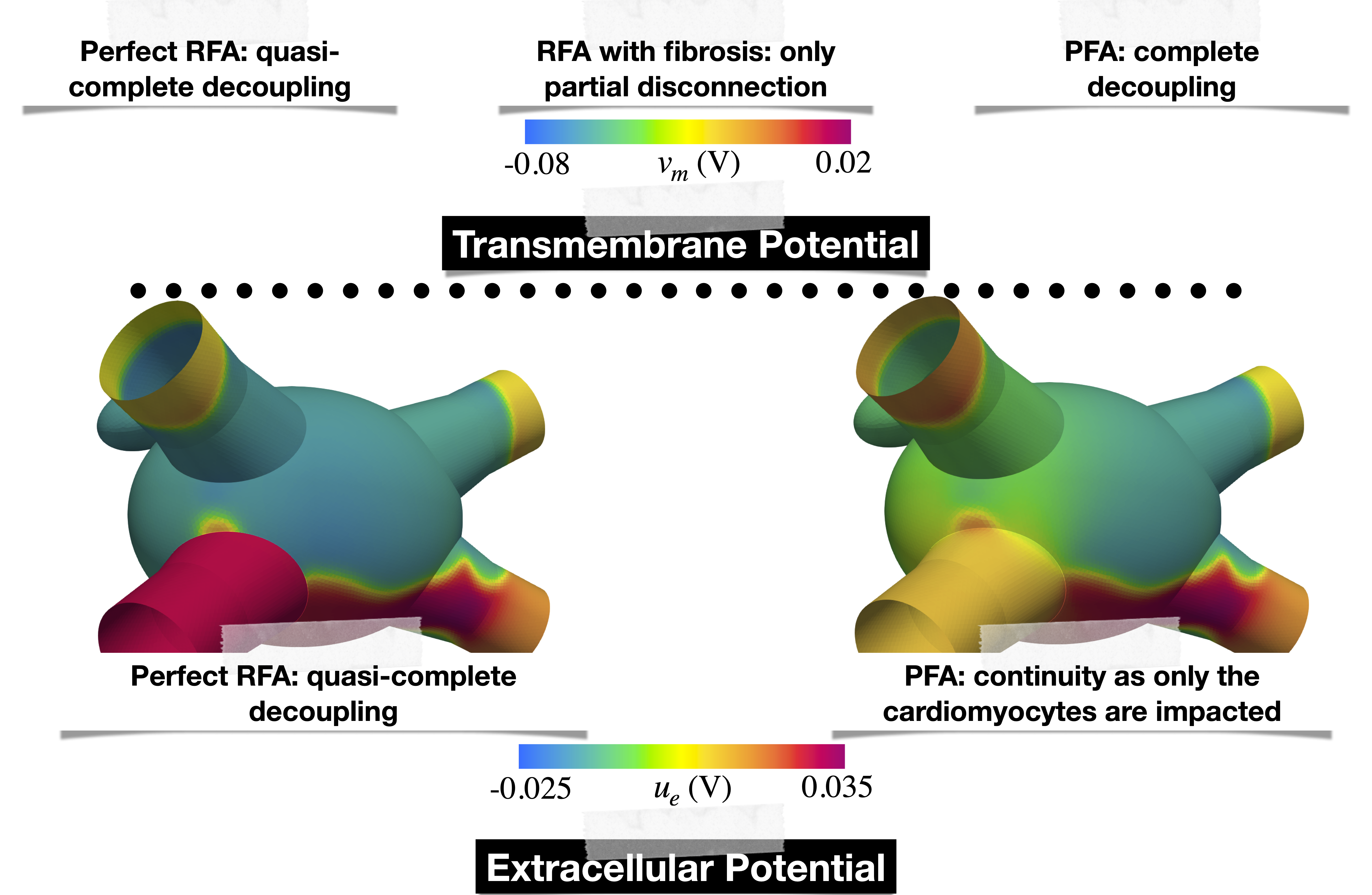Illustrative example of my research: Cardiac Ablation by Electroporation
Context & objective
Isolation of reentry areas at the origin of atrial fibrillation by destroying small areas of the heart
Novel non-thermal ablation technique: Pulsed electric Field Ablation (PFA) which takes advantage of irreversible electroporation
In the context of atrial fibrillation, explain the higher recurrence rate after radiofrequency ablation (RFA) compared to PFA
Strategy & Modeling
Strategy: Build a cardiac electrophysiological model of a cardiac domain containing a region ablated by PFA (& by RFA) and make numerical comparisons.
We start from the bidomain model and we make modeling hypothesis inside the ablated region
It leads to the introduction of a small parameter
Mathematical Analysis
Existence & Uniqueness: under conditions on the ionic term
Asymptotic Analysis: Ansatz, Problem at order p (inside and outside the membrane), Convergence proof with convergence order
Numerical Simulation
Numerical resolution: Finite Element Method, BDF 2, FreeFEM++
Non-overlapping Schwarz-type algorithm: Penalty parameter chosen very carefully through a mathematical study
Mesh, fibers and codes are available here: https://gitlab.inria.fr/snatipol/af-pfa-rfa
Kedem–Katchalsky transmission condition for RFA with different values of the permeability coefficient
Corresponding articles
S. Nati Poltri, G. Caluori, P. Jaïs, A. Collin, C. Poignard. Electrocardiology modeling after catheter ablations for atrial fibrillation. Proc. of FIMH, 2023.
A. Collin, S. Nati Poltri, C. Poignard. Electrocardiology modeling after pulsed field ablation relying on asymptotic analysis, 2024 (to submit).


; ?>)
; ?>)
; ?>)



; ?>)
; ?>)
; ?>)
